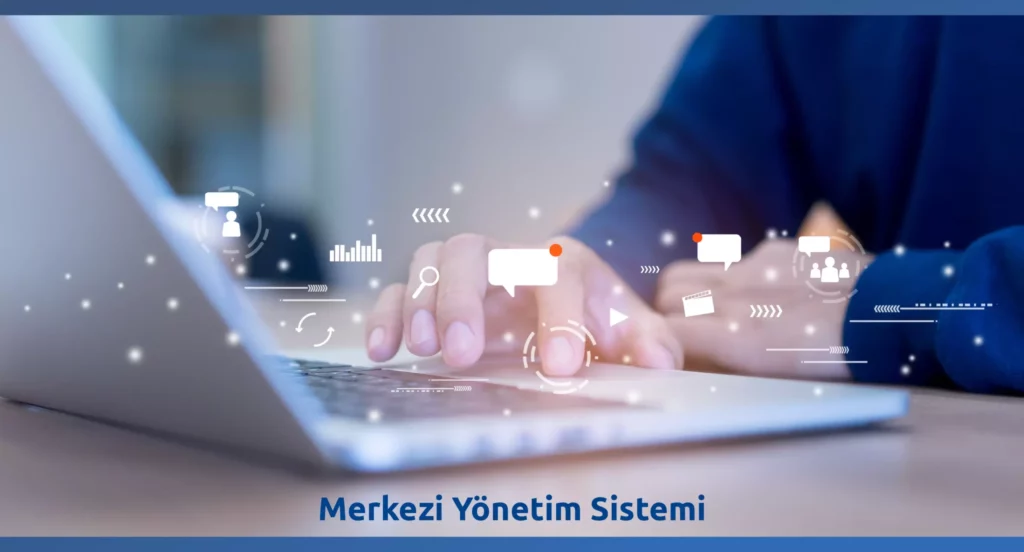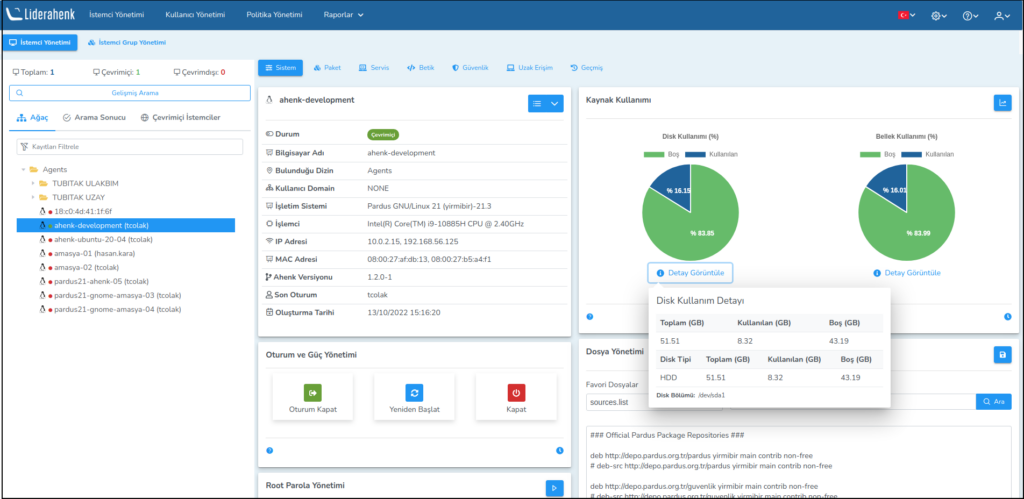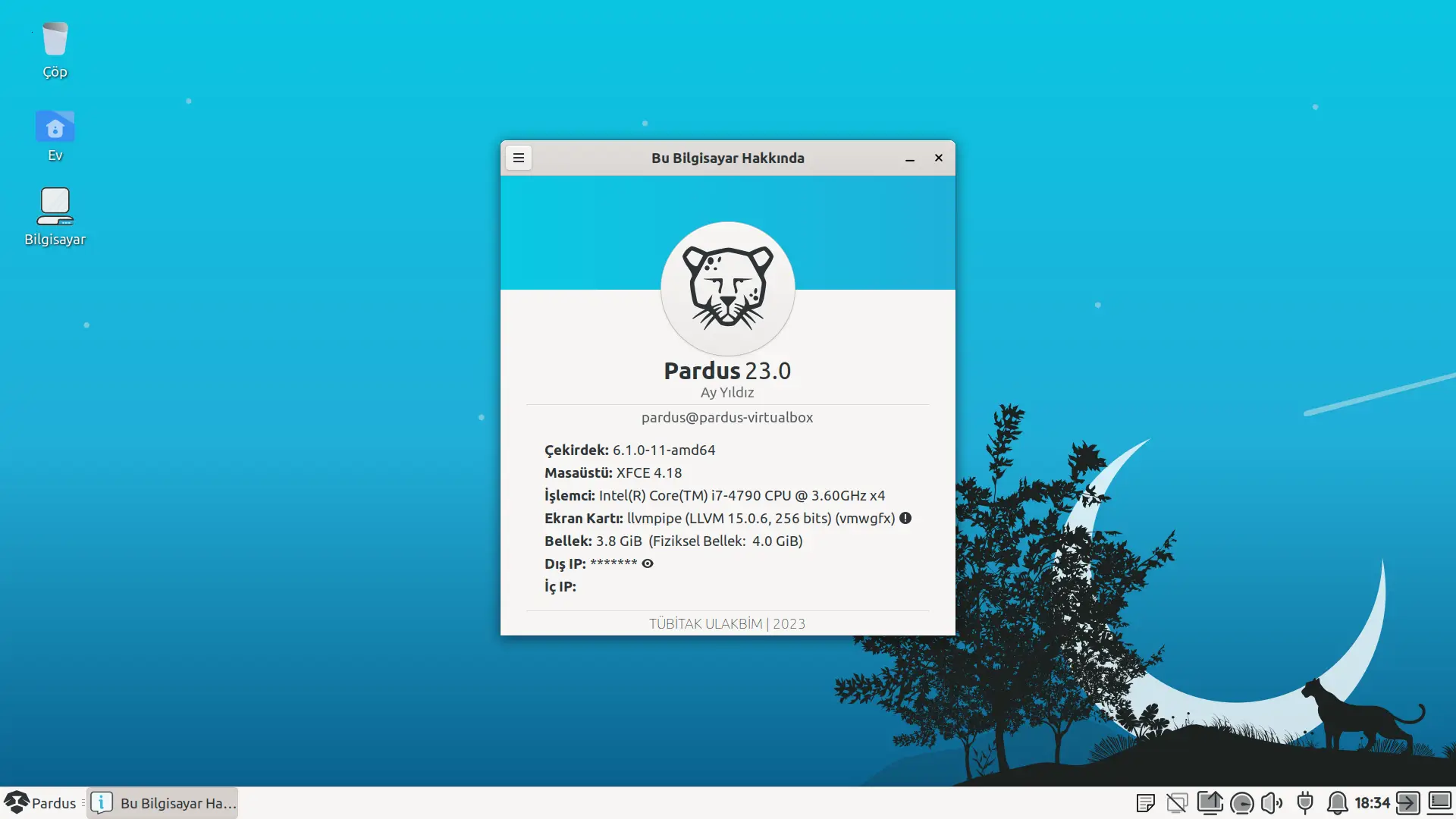
Büyük ve orta ölçekli kurum ve kuruluşlarda cihazların kurum kaynakları ile yönetimi ve kontrol altında tutulmaya çalışılması oldukça maliyetli yer yer ise yönetilmesi imkansız durumda olduğu gözlemlenmiştir. Küresel yazılım piyasasında istemci yönetimi ile ilgili gerek açık kaynak gerekse açık kaynak olmayan uygulamaların oldukça az ve yetersiz olduğu gözlemlenmiştir.
Bütün bu sebepler ile birlikte yapılan çalışmalarda herhangi bir uygulamaya alt yapı sağlayarak entegre edilebilen ve yönetimini istemciler üzerinde yapabilen çözüm alt yapısı ihtiyacının olduğu ortaya çıkmıştır.
Merkezi olarak kurumsal bilgisayarların yönetimi konusunda bazı temel ilkeler ve uygulamalar bulunmaktadır. Bunlar;
- Merkezi Yönetim Sistemi: Kurumsal olarak bilgisayar(istemci) yönetimi için etkili bir yöntem, merkezi bir yönetim sistemi kullanmaktır. Merkezi yönetim sistemi, tüm bilgisayarları tek bir noktadan izlemeyi, yapılandırmayı ve güncellemeyi sağlayarak sistem ve ağ yöneticilerine katkıda bulunur.
- Donanım Envanteri ve Varlık Yönetimi: Merkezi bir yönetim sistemi, tüm kurumsal bilgisayarların donanım envanterini ve varlık yönetimini kolaylaştırır. Bu sistem sayesinde, kurulu bilgisayarların türü, işletim sistemi sürümü, donanım özellikleri ve yazılım lisansları gibi bilgiler toplanabilir. Bu veriler, bireysel bilgisayarların takibi, envanterin yönetimi ve güncelleme ihtiyaçlarının belirlenmesi için kullanılabilir.
- Uzaktan Yönetim ve Destek: Merkezi bir yönetim sistemi, ağdaki bilgisayarları uzaktan yönetmeyi ve desteklemeyi sağlar. Uzaktan yönetim özellikleri sayesinde, sistem ve ağ yöneticileri bilgisayarlara uzaktan erişebilir, sorunları tanımlayabilir ve çözebilir, yazılım güncellemelerini yapabilir ve kullanıcılara destek sağlayabilir. Bu, kurumsal işletmeler için zaman ve maliyet tasarrufu sağlar.
- Güvenlik ve Politika Yönetimi: Merkezi bir yönetim sistemi, güvenlik politikalarının uygulanmasını ve izlenmesini kolaylaştırır. Güvenlik açıklarının tespiti, güvenlik duvarı ve antivirüs yazılımı güncellemelerinin takibi gibi güvenlik önlemleri merkezi olarak yönetilebilir. Ayrıca, politika yönetimi sayesinde belirli kullanıcı gruplarına özel izinler atanabilir ve kurumsal politikaları bilgisayarlara otomatik olarak uygulanabilir.
- Yazılım Dağıtımı ve Güncelleme: Merkezi yönetim sistemi, yazılım dağıtımını ve güncellemelerini kolaylaştırır. Güncellemeler otomatik olarak tüm bilgisayarlara uygulanabilir.
Bu temel ilkelere dayanarak bir çok merkezi yönetim sistemi uygulaması geliştirilmiştir. Kurumsal ağ üzerindeki sistemleri ve kullanıcıları merkezden yönetilebilmeyi, izlemeyi ve denetlemeyi sağlayan, TÜBİTAK ULAKBİM tarafından geliştirilen açık kaynaklı bir yazılım sistemi olan Liderahenk bu uygulamalardan biridir. Liderahenk, küresel dünyada kurumsal bilgi işlem merkezlerinin, sürekli genişleyen ve değişen bilişim araçları üzerindeki kurumsal politikalarını, güvenlik gereksinimlerini, etkin, esnek ve düşük maliyetlerle karşılamak üzere geliştirilmiştir.

Merkezi olarak kurumsal bilgisayarların yönetimi, işletmelere verimlilik, güvenlik ve maliyet tasarrufu sağlar. Merkezi yönetim sistemi kullanarak, donanım envanteri ve varlık yönetimi, uzaktan yönetim ve destek, güvenlik ve politika yönetimi, yazılım dağıtımı ve güncelleme gibi önemli işlevleri kolaylaştırabilirsiniz. Kamu kurum ve kuluşların bilgisayar altyapılarını etkin bir şekilde yönetmelerine yardımcı olur.
Sonraki >> Liderahenk Merkezi Yönetim Sistemi




